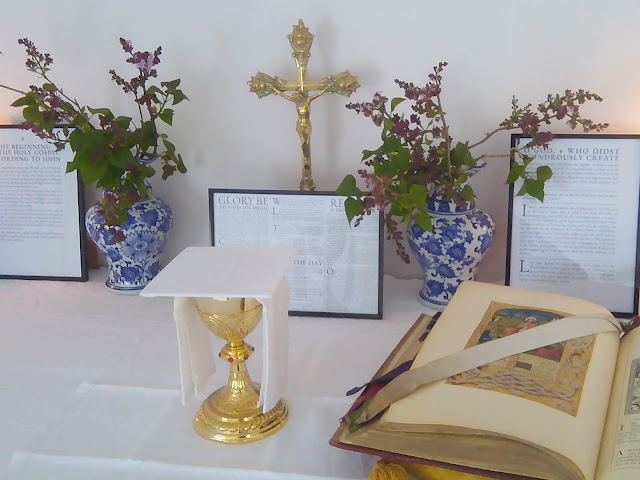La Ferté
La Ferté
The abbaye de La Ferté at Saint-Ambreuil (Saône-et-Loire) provides a link between Burgundy, Hampshire and Carlisle.
Beaulieu Abbey in Hampshire was founded by King John in 1204, as Cîteaux's first daughter house in England, with some 30 founding monks sent out direct from Burgundy. The Abbot of La Ferté, first daughter of Cîteaux, had been sent himself with the founding monks the previous year by the Abbot of Cîteaux, with the idea of originally starting the house at Faringdon in Berkshire, but it was decided instead to set up the monastery at Beaulieu. Beaulieu Abbey went on to establish daughter houses of its own at Netley (1239), then later Hayles, Newenham, and St Mary Graces, London.
The picture below shows what is now the church at Beaulieu, but which was the Cistercian monastic refectory: the steps in the wall led up to the pulpitum from which the readings at mealtimes took place.
The first Abbot of Beaulieu, chosen from among those Burgundian monks, was named Hugh, but he was evidently something of a disaster, although clearly in King John's good books. The king sent him abroad on various missions, including to the Fourth Lateran Council, but Hugh was not one for living according to the simple life expected of a Cistercian abbot, and was accused of eating off silver plate and being waited on by secular servants. The Abbot of Cîteaux consequently deposed him in 1218, but King John's successor, Henry III, immediately appointed him Bishop of Carlisle instead, against the wishes of the cathedral chapter. King Henry sent him to the Council of Verona in 1222, and yet again we see how Burgundy's location on the traveller's route between England and Italy came into play: Bishop Hugh stopped at the Abbey of La Ferté on his way back from the council, fell ill and died there in 1223. He was given a tomb in the abbey church, which survived until the Revolution.
The picture above shows La Ferté in the late 18th century, just as it was beginning to be demolished following the French Revolution. The church containing the Bishop of Carlisle's tomb is shown in the picture, with the 17th and 18th century abbot's lodgings to the right of the church's west front. As in England following the Reformation, so in France following the Revolution, bits of monastic buildings suitable to be turned into grand or at least comfortable houses were acquired by those on the make as part of their social ascent; and so the abbot's lodgings were the only part of the monastery to survive, and now form the main part of the château, which is today open to the public.






.png)
